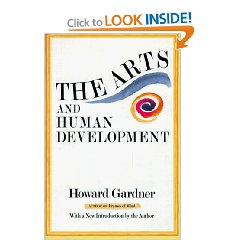While we were in Canada I spoke at a Toronto area Vineyard church that was interested in the Finding Divine Inspiration message. Scott Roe, Pastor at the Cambridge Vineyard– which is on the grounds of a lovely old monastery 
 –opened his church up to us not knowing if anyone would show up. We were both surprised when people just kept coming…until the fairly small room was packed out. These Canadians were our most attentive and inquisitive audience so far, and their questions were excellent.
–opened his church up to us not knowing if anyone would show up. We were both surprised when people just kept coming…until the fairly small room was packed out. These Canadians were our most attentive and inquisitive audience so far, and their questions were excellent.
One person asked a couple of questions along the lines of, “ Who can be called an ‘artist’?” and “What art is ‘good enough’ be displayed in the church?”. Important things to ponder when talking about a New Renaissance in the church. Of course, the fear behind that question is that “everyone” will start making art that God “told them to”, and instead of getting away from the reputation that Christian art is schlocky, we will perpetuate it.
In any given church, there may be a huge range of people who get involved in the creative process, from the child with crayons, to teens expressing their angst in sketch books instead of listening to the sermon. From the adults who think they might be an artist and want to explore that, to those who have been trained, have mastered their craft and are making a living at it. On both ends of the spectrum you can have some flawed thinking. The beginner—even the adult– might have a “making art is magic” mindset, believing it will all just magically come together or that God will instantly make them a good artist. The master may have an elite view that only those who are accomplished are truly artists.
Making inspired art requires inspiration from God, but that doesn’t necessarily make the work effortless. Although God can empower beginners to make meaningful art, as a rule we collaborate by learning the craft and growing our skill. I understand those who are trained and accomplished wanting to protect any progress that’s been made in upgrading the quality of “Christian” art—I certainly want to do that—but I suspect God’s idea of what art is or who could be called an artist, is not so exclusive.
On this trip to Canada I visited a funky district in Toronto called Kensington Market , where I was inspired by a place called “Wanda’s Pie in the Sky”. I love pie, so I took the existence of a pie restaurant as a gift from God. But He also gave me something a little more substantial. In a cramped used bookstore that was playing Mexican trance music, I found the book, “The Arts and Human Development” by Howard Gardner.

It seemed God led me to this book, as he has wonderfully done so many times. I read in the preface Gardner’s thoughts on this question I been asked just the night before.
“Perhaps the chief mystery confronting the student of artistic development is the relationship between the mature adult practitioner—the skilled poet , the painting master, the virtuoso instrumentalist or composer—and the young child playing with words, humming and inventing melodies, effortlessly producing sketches and paintings while engaging in many other activities that have only a tenuous relationship to the arts. Clearly there are important differences in skill, acquaintance with the artistic tradition, sensitivity to nuance between the child and the adult participants in the artistic process. But a more fundamental question for the psychologist is whether the schoolchild must pass through further, qualitatively different stages in order to become an artist. On this question I have arrived at an unexpected conclusion: the child of 7 or 8 has, in most respects, become a participant in the artistic process and he need not pass through an further qualitative reorganizations (to be called that).”
Interesting! So Gardner seems to think that if a person– a child in this case– is involved in the artistic process, they could be called an artist.
Whether you agree with Gardner or not, you can’t deny that with technology the ability of the average person to be creative—even artistic—and express themselves in a public arena, is greater than it has ever been. Nearly every kid I know has a Myspace or Facebook page where they are constantly creating and adding content, photos, stories, ideas, and messages. This explosion of access to creative tools may change the world in the next ten years. In the future the majority of people may be adept at some kind of creativity, even artistry. We may experience interactive creativity and art in ways we never dreamed possible. We in the church need to embrace the wave of accessible creativity and try to discern how God can speak through it. The Church can and should be involved in the business of drawing out people’s creativity and connecting them to the source of it.
The Body of Christ will be on the road to maturity, and the world will see a more accurate representation of God’s personality when all of our gifts—fully developed or not– are able to work together and flourish in the Church. Therefore, I think there should be a place in the creative life of a church for most people who feel drawn to making art, from the beginner to the master. That doesn’t mean everyone’s work gets displayed publicly, but there are ways to encourage people of all skill levels to collaborate with God.
So how can we open up our churches and our minds so that more people can get involved in the creative process, yet continue to raise the quality of our art?
Well….More thoughts coming soon!

Debbie Axsom
When we think of musical artists, the church is often where those fledgling talents are nurtured. As we become adults the opportunities to make music as a part of worship don’t end leaving us all to become spectators. We sing with the congregation, and we provide choirs for voices that enjoy the support of many voices. Slightly stronger voices may find a place in a worship band. Not everyone is a soloist.
I think as we create a value for the visual arts in our church community we will also be creating natural places where all can both enjoy and participate in the visual arts as more than just spectators. In some churches this has already happened.
We have to learn together what is “good.” and in art as much as any other field this is a moving target. What we should understand with certainty at this point is that it is not always predictably the trained musician or visual artist that brings that moment of awareness that this is “good.” The recent Susan Boyle story is a delightful example, or what about James Hampton the janitor whose art was deemed good enough to be displayed in the Smithsonian.
Dave Weiss
Thank you, thank you, thank you for this post. In my efforts to go into the church and help people to utilize the arts, the wall I come up against over and over again, is “I’m no artist” and the even more frustrating, “I’m not creative.” Is everyone an artist? No but everyone can express themselves creatively because I believe everyone is creative. Some are creative with a brush and some with a checkbook or a wrench but we are children of the creator. I think a big part of the reason for this is the snobbery of artists who build walls to keep people out and protect what’s “theirs.” Let’s be real. I defy anyone to go to any modern art museum and not confess there is some real crap among the masterpieces. Why is it there? Well sometimes the cynic in me is convinced we’re educated beyond our intelligence and we get off on making people wonder why they don’t get something, as if we are elite and better than the “great unwashed.” But then the loving believer in me beats the cynic down and reminds me that while the piece may be crap to me, it touched someone else’s heart and imagination.
The work I do, especially my worship art, is done very quickly, 15 to 20 minutes. I do the best I can in the amount of time I have to create the best piece I can do. That being said, it’s not art for art’s sake. It’s art designed to draw people a little deeper into the message. The art to me is secondary, I am trying to touch a heart. I think the bottom line is this, maybe we need to stop trying to grade art and just make art, trusting that it will touch the hearts it is designed to touch. After all what are our gifts really about if we offer them to God. I think it’s all about giving God our best and trusting Him with the rest. Thanks for this post, it’s good to read something that makes me feel I’m not totally off the reservation.